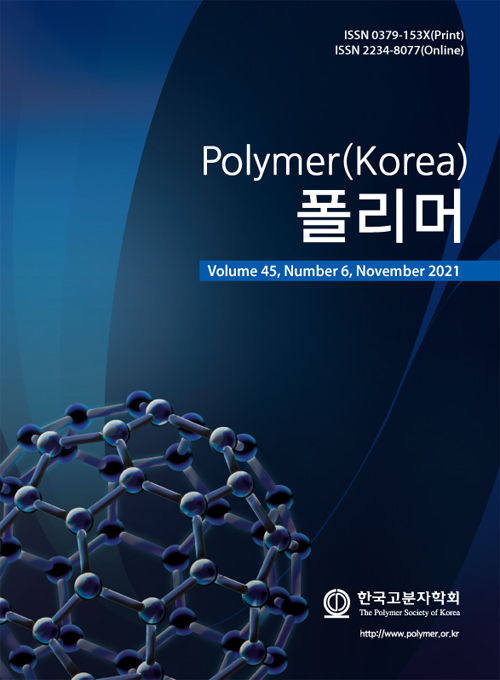- Microporous Zn(II)-MOF for Selective C2H2 Adsorption and Anti-cancer Activity on Liver Cancer Combined with LL-37
Xiu-Qin Wei, Shuan-Yuan Yang*†
 , Xiao-Xia Li**, and Mei-Li Xu**
, Xiao-Xia Li**, and Mei-Li Xu**Department of Infections, Wuwei People's Hospital, Wuwei, Gansu 727031, China
*Department of Hepatobiliary Surgery, Tongchuan People's Hospital, Tongchuan, Shaanxi 733000, China
**Department of Medicine, Hebei Hospital, Shijiazhuang, Hebei 050000, China- 미세다공성 Zn(II)-MOF의 아세틸렌 선택 흡착과 LL-37을 이용한 간암에 대한 항암효과 연구
Reproduction, stored in a retrieval system, or transmitted in any form of any part of this publication is permitted only by written permission from the Polymer Society of Korea.
By employment of a semi-rigid carboxylic acid ligand 5,5' -((5-carboxy-1,3-phenylene)bis(azanediyl))diiso- phthalic acid (H5L) with the -NH- joints, a new porous metal-organic framework (MOF) based on Zn(II) ions as nodes has been generated in success, and its chemical formula is {[Zn3(m3-OH)(L)(H2O)3]·3DEF·H2O}n (1). Owing to its Lewis basic -NH- joints and the π-electron-rich benzene rings on the skeleton, the activated complex 1 offers a favourable pore environment for binding C2H2 in preference to CO2 and CH4. The inhibitory activity of compound on the liver cancer viability was determined through exploiting the Cell Counting Kit-8 kit. Afterwards, the invasion and migration ability for the liver cancer cells was measured after indicated treatment. Multiple binding interactions are identified by performing the molecular docking simulation, indicating the stabilization effect of the Zn complex towards the target protein, and therefore, the proposed drug molecule exhibits good anticancer activities.
Keywords: metal-organic framework, porous framework, gas separation, liver cancer, molecular docking.
- Polymer(Korea) 폴리머
- Frequency : Bimonthly(odd)
ISSN 0379-153X(Print)
ISSN 2234-8077(Online)
Abbr. Polym. Korea - 2023 Impact Factor : 0.4
- Indexed in SCIE
 This Article
This Article
-
2021; 45(6): 872-880
Published online Nov 25, 2021
- 10.7317/pk.2021.45.6.872
- Received on Jun 19, 2021
- Revised on Aug 2, 2021
- Accepted on Aug 18, 2021
 Correspondence to
Correspondence to
- Shuan-Yuan Yang
-
Department of Hepatobiliary Surgery, Tongchuan People's Hospital, Tongchuan, Shaanxi 733000, China
- E-mail: yangshuanyuan19692@163.com









 Copyright(c) The Polymer Society of Korea. All right reserved.
Copyright(c) The Polymer Society of Korea. All right reserved.